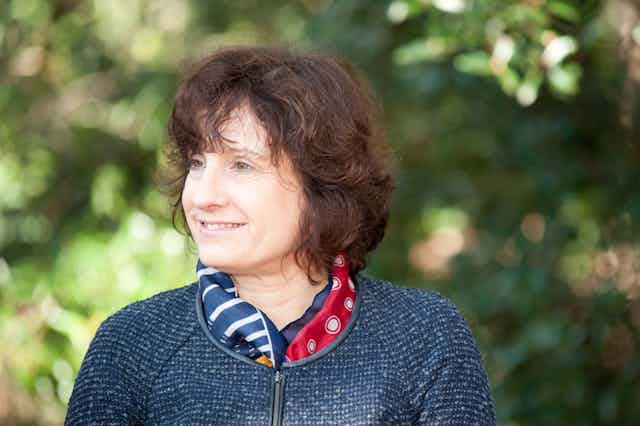An ecologist’s work to explain the impact of climate change to as wide an audience as possible has been awarded one of this year’s Eureka Prizes.
The annual Australian Museum Eureka Prizes, announced Wednesday night at the Sydney Town Hall, celebrate the best in Australian science, innovation, leadership, research and science journalism.
Lesley Hughes, from Macquarie University, was awarded the Australian Government Eureka Prize for Promoting Understanding of Australian Science Research.
Her free online course explains the science of climate change in straightforward terms for non-scientists – and has even received praise from some climate sceptics, who found they had been lacking a clear explanation of the science.
Australian Museum director and chief Kim McKay praised Professor Hughes for finding a way to engage people in climate science.
“With issues like climate change, the science may be settled, but the debate rages on,” she said. “For many scientists, this gap between science and public understanding is unfathomable. Lesley Hughes is bridging that gap.”
Other winners on the night included several authors on The Conversation such as Maree Teesson, who was awarded the University of Technology, Sydney Eureka Prize for Outstanding Mentor of Young Researchers.
The Director of the National Drug and Alcohol Research Centre, at the University of New South Wales, was praised for developing a team that can help people suffering from substance abuse and mental health issues. Her team is also involved in work dealing with the prevention of substance abuse.
Ms McKay said Professor Teesson had a “gift for guiding, nurturing and mentoring young researchers” and would take more pride in their achievements than her own.
Mathematician and statistician Terry Speed, from Melbourne’s Walter and Eliza Hall Institute of Medical Research, won the CSIRO Eureka Prize for Leadership in Science. It was for the same work in bioinformatics, using high quality number crunching in cancer research, that saw him awarded the Prime Minister’s Prize for Science last year.

Mark Talbot, from CSIRO, was awarded the New Scientist Eureka Prize for Science Photography with his image (above) that captured the birth of a seed using a scanning electron microscope.

Second place was the Australian National University’s Charles Tambiah for his image (above) of a delicate marine creature known as a basket star, and third place went to Queensland Museum’s Gary Cranitch for his image (below) of a feeding manta ray.

Harry Driessen, a Grade 6 student from Croydon Public School in New South Wales, won the University of Sydney Sleek Geeks Science Eureka Prize – Primary. His video, The Sound of Music, explains what sound waves are, how we hear sound and how musical instruments work. You can see it below.
Ms McKay said Harry had successfully combined his two passions – science and music.
“As long as we have such passionate scientists coming through our schools, Australia’s scientific future is bright,” she said.
The winner of the Australian Government Eureka Prize for Science Journalism was Sonya Pemberton, from Genepool Productions, for her documentary on vaccinations.
Jabbed – Love, Fear and Vaccines was broadcast on SBS last year and was praised by Ms McKay as a “powerful piece of science journalism”.
Pemberton is currently in the United States where the documentary is being rebroadcast as Vaccines – Calling the Shots, on PBS Nova on the same date as the Eureka Prize was awarded.
Other winners of the 2014 Eureka Prize include:
The University of Tasmania’s Graham Edgar and Rick Stuart-Smith won the NSW Office of Environment and Heritage Eureka Prize for Environmental Research. They trained and used 200 volunteer divers around the world to create the freely available Reef Life Survey on the the health of the world’s reefs.
Adriana Downie, from Pacific Pyrolysis, won the 3M Eureka Prize for Emerging Leader in Science for her work on slow-pyrolysis technology. It converts plant waste products into biochar, a soil improver with potential to mitigate climate change.
Tim Lyons, from One Atmosphere, was awarded the Defence Science and Technology Organisation Eureka Prize for Outstanding Science in Safeguarding Australia. The engineer and ex-Navy diver invented the Pegasus lightweight helicopter buoyancy device that inflates within a second to save lives following a helicopter crash at sea.
Jackson Huang, a Year 12 student from the Queensland Academy for Science, Mathematics and Technology won the University of Sydney Sleek Geeks Science Eureka Prize — Secondary. His video – below – on phantom limbs explains the puzzling neurological disorder and the complexity of the human nervous system.
John Kirkegaard and James Hunt from CSIRO’s Water Use Efficiency initiative and Stuart Kearns of the Grains Research and Development Corporation (GRDC) won the Department of Agriculture Landcare Eureka Prize for Sustainable Agriculture. They developed methods that allow grain farmers to add more than 50% extra wheat yield from the same water supply.
CSIRO’s Hendra Virus Research Team, in Geelong, won the Australian Infectious Diseases Research Centre Eureka Prize for Infectious Diseases Research for creating the first vaccine and effective human treatment against Hendra virus. The team is also developing skills and resources that are being applied against Ebola.
Tri Phan, from the Garvan Institute, and the Australian National University’s Steve Lee won the ANSTO Eureka Prize for Innovative Use of Technology for their patented invention of a A$2 microscope that transforms smartphones into mobile laboratories.
Simon Ho, from the University of Sydney, was awarded the Macquarie University Eureka Prize for Outstanding Early Career Researcher. His work on molecular clocks will help biologists explain how quickly different organisms evolve.
The University of Melbourne’s South-eastern Australian Recent Climate History (SEARCH) team won the University of New South Wales Eureka Prize for Excellence in Interdisciplinary Scientific Research for their success in mapping a thousand years of Australian climate history.
The B-cell Team, at the Walter and Eliza Hall Institute of Medical Research, won the University of New South Wales Eureka Prize for Scientific Research for unravelling the workings of the rare, specialised cells in our blood that create antibodies to fight infection and disease.

